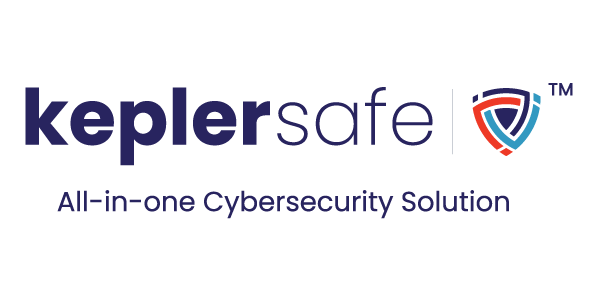Cybersecurity Education 101: The Urgent Need to Protect Colleges and Universities

In today’s increasingly interconnected world, the threat landscape for cyberattacks continues to evolve and expand at an alarming rate. Colleges and universities are now popular targets for hostile actors looking to take advantage of loopholes and obtain unauthorized access to valuable data and intellectual property. There has never been a greater pressing need to safeguard these educational institutions from online attacks.
We will examine the essential necessity for colleges and institutions to be protected through cybersecurity education. We will examine the changing threat landscape, go through the particular weaknesses that affect educational institutions, and highlight the possible repercussions of a cyberattack.
Importance of Cloud Security in 2023
Malicious actors are always creating new attack methods, strategies, and tools to penetrate systems and take advantage of flaws. The threat environment is dynamic and quickly evolving, ranging from sophisticated phishing scams to ransomware assaults and future dangers including attacks driven by artificial intelligence. For schools and universities to successfully minimize risks and safeguard their priceless assets from cyber attacks, it is imperative that their security procedures be up-to-date and flexible. They must also use strong defenses, proactive monitoring, and continual education.
Consequences of Cyberattacks on Educational Institutions
A successful cyberattack on a school might have far-reaching repercussions. Sensitive student and teacher information may be exposed as a result of data breaches, raising the possibility of identity theft and privacy violations. Financial losses may result from paying the ransom or paying to recover from the assault. The disruption of academic activities can have a detrimental effect on the learning environment by interfering with lectures, tests, and administrative tasks.
Institutions may lose out on important research discoveries, inventions, and competitive advantages due to intellectual property theft. Research integrity violations damage academic work’s reputation and public confidence. In addition, the institution’s prestige among the academic community and society at large may be harmed, which will make it more difficult for it to attract students, staff, and financing.
Compliance Requirements and Legal Obligations
Importance of a Comprehensive Cybersecurity Education Program
Such a program develops responsible digital behavior and establishes a culture of cybersecurity awareness among students, professors, staff, and administrators. Individuals are empowered to actively contribute to the institution’s overall security posture by having the knowledge and skills needed to recognize and mitigate cyber risks. Institutions may better defend their networks and systems, preserve their sensitive data, and reduce the dangers brought on by increasingly sophisticated cyberattacks by adopting a comprehensive approach to cybersecurity education.
Collaboration and Partnerships
These stakeholders may share information and skills, as well as best practices and emerging trends, by forming partnerships. Collaboration makes it easier to share threat data and respond proactively to changing cyber threats.
Additionally, collaborations provide participants access to crucial resources including finance, cutting-edge technology, and highly qualified personnel that may improve cybersecurity resilience and capabilities. Together, these cooperative initiatives improve cybersecurity ecosystems, encourage innovation, and create a safer online environment for people, businesses, and society at large.
Emerging Trends and Technologies
Artificial intelligence (AI), machine learning (ML), and blockchain are a few of the emerging trends and technologies that have the ability to both improve security measures and pose new difficulties. By analyzing enormous volumes of data and seeing patterns suggestive of cyber risks, AI and ML can improve threat detection and response. However, because adversaries might use these technologies for sophisticated assaults, they also present hazards.
Similar to that, blockchain provides transparent and secure transactional capabilities but necessitates knowledge of its own security issues. Education and training programs must change to provide cybersecurity experts with the information and abilities needed to successfully traverse these developing technologies, assuring the safety of digital assets and infrastructure. This will enable them to maximize advantages and minimize risks.
Ongoing Monitoring and Assessment
In order to take preventative actions, regular security audits, vulnerability assessments, and penetration testing assist discover system flaws and vulnerabilities. Institutions may keep ahead of changing risks, maintain adherence to security requirements, and apply appropriate modifications and protections by completing these evaluations.
Continuous monitoring makes it possible to identify unusual activity and potential breaches, enabling quick reaction and mitigation. Educational institutions may maintain a strong cybersecurity posture, secure sensitive data, preserve their networks and systems, and guarantee the overall resilience of their digital infrastructure by taking a proactive and watchful approach.
Incorporating Cybersecurity into the Curriculum
Regardless of their specialization, educational institutions may generate graduates with a fundamental grasp of cybersecurity by integrating cybersecurity concepts, principles, and practical skills into a variety of subjects of study. Additionally, focused cybersecurity programs give students in-depth information and practical experience to better prepare them for the industry’s unique problems and requirements.
A more secure digital environment may be achieved by embracing multidisciplinary approaches and encouraging collaboration between technical and non-technical disciplines to develop well-rounded cybersecurity experts that can successfully traverse complex cyber threats, close knowledge gaps, and do so.
The Role of Leadership and Institutional Support
The institution’s strategic goals, policies, and practices are prioritized and linked with cybersecurity thanks to top-down support. It develops a culture of security knowledge and accountability among teachers, staff, and students, empowers devoted cybersecurity experts, and offers sufficient resources.
Effective leadership encourages cooperation, forges alliances with business leaders and governmental organizations, and makes it easier to obtain money, cutting-edge technology, and training opportunities. Colleges and universities can develop excellent cybersecurity programs, draw top talent, successfully handle new issues, and contribute to a safe digital environment for their communities with strong leadership and institutional support.
Conclusion
Prioritising cybersecurity education is crucial given the frequency and sophistication of assaults against educational institutions. Kepler Safe, a complete cybersecurity platform, can offer the tools and knowledge required to protect the digital infrastructure of educational institutions if you require assistance in this constantly changing environment.
To maintain the security of sensitive data and the future of our schools and institutions, Kepler Safe provides superior threat detection, real-time monitoring, and proactive response capabilities. We can improve the cybersecurity resilience of educational institutions and safeguard the priceless assets under their care by working together proactively.
